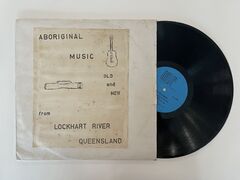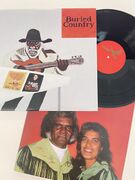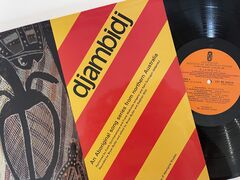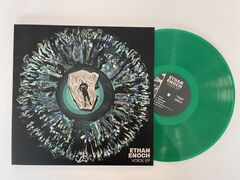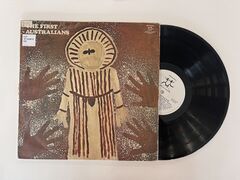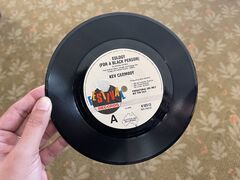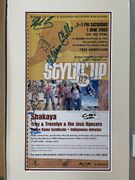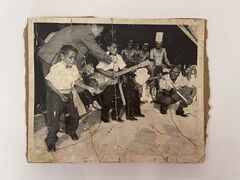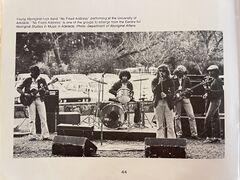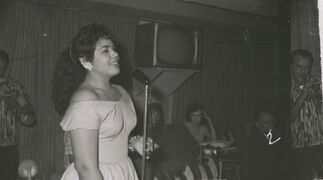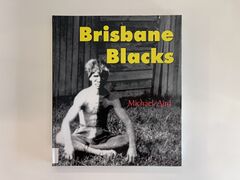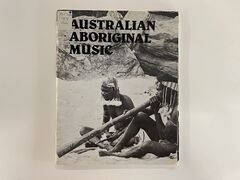My Experience as First Nations Wikipedian in Residence
JamesGaunt (talk | contribs) m (formatting per request) |
JamesGaunt (talk | contribs) m (JamesGaunt moved page My Expereince as First Nations Wikipedian in Residence to My Experience as First Nations Wikipedian in Residence: typo) |
Latest revision as of 02:35, 20 July 2023
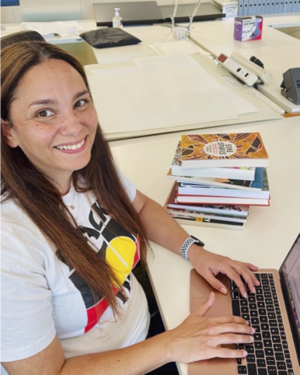
Bianca Valentino recently undertook the role of First Nations Wikipedian in Residence at the State Library of Queensland (SLQ) in collaboration with Wikimedia Australia. Her role was part of The Record: Australian Music On Wikipedia project, a partnership between Wikimedia Australia and the Australia Council for the Arts aimed at increasing the number of Wikipedia articles about Australian music.
Through the residency program, Bianca had the privilege of accessing the library's extensive resources, which enabled her to contribute to and enrich the representation of First Nations music and musicians on Wikipedia. The support and assistance from the SLQ team was invaluable as she delved into the collection over a ten-week period from May to July.
Rewriting the Narrative: Challenging Marginalisation and Misrepresentation
As an Aboriginal and Torres Strait Islander creative, I deeply understand the significance of amplifying Indigenous voices, rewriting the narrative, and celebrating our cultural heritage. By giving prominence to Indigenous perspectives, stories, and contributions on Wikipedia, we have the power to challenge the dominant narratives that have often marginalised or misrepresented us. Through accurate and inclusive representation, we can reshape the discourse.
Initiatives like this provide an opportunity for us to reclaim our narratives, fostering a sense of pride, empowerment, and cultural resurgence within our communities. At the same time, it educates and enlightens non-Indigenous individuals about the depth and richness of Indigenous cultures. Rewriting the narrative involves dismantling stereotypes, dispelling myths, and offering a more nuanced and authentic portrayal. It requires us to confront the historical and systemic biases that have shaped mainstream narratives and highlight the contributions, achievements, and resilience of our peoples throughout history.
This work not only affirms our contributions, but it also enriches the broader collective understanding of humanity's shared heritage. It fosters a more inclusive and equitable society where Indigenous voices are heard and valued.
Amplifying Indigenous Voices on Wikipedia
This project holds significance on multiple fronts. Aboriginal and Torres Strait Islander musicians have made remarkable contributions to the music landscape, showcasing our artistic excellence, innovative approaches, and the unique blend of traditional and contemporary sounds. The project serves as a testament to the resilience, creativity, and cultural heritage of our communities. It offers a platform to amplify Indigenous voices, challenge prevailing stereotypes, and cultivate broader awareness and appreciation for our diverse musical traditions and contributions.
The Importance of Music in Aboriginal and Torres Strait Islander Cultures
Music holds profound importance in Aboriginal and Torres Strait Islander cultures, serving as a vehicle for expressing identity, traditions, and spirituality. It acts as a powerful medium for connecting with our Ancestors, Country, and community, fostering a sense of belonging and continuity. For tens of thousands of years, music has been an integral part of our oral traditions, ensuring the preservation and transmission of important stories, histories, and knowledge from one generation to another. Our music acts as a conduit, allowing us to maintain strong connections to our Ancestral roots. It is also recognised as a potent tool for healing within our communities, offering solace, comfort, and strength during challenging times. Music promotes emotional well-being, nurtures community cohesion, can facilitate intergenerational healing, and plays a pivotal role in cultural revitalisation efforts. It serves as a platform for reclaiming and celebrating Indigenous languages, traditional instruments, and cultural practices, allowing communities to reaffirm their cultural pride and assert our cultural sovereignty.
Challenges and Opportunities
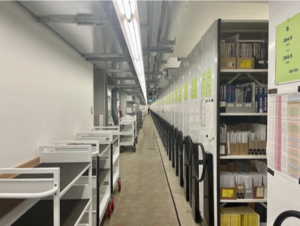
Upon beginning the residency at SLQ, I realised the magnitude of the task at hand while navigating through the collection. Even within the given timeframe, the project merely scratched the surface of the vast breadth and depth of First Nations music in Australia.
The library's catalogue and archives opened a world of possibilities for her research and content creation on Wikipedia. She unearthed a wealth of relevant materials, including books, journal articles, clippings, photographs, oral histories, recordings, videos, posters, and music-related artefacts. Immersing herself in the catalogue's offerings, I discovered specific subject headings, keywords, and cross-references that expanded her search and led her to hidden treasures.
Of particular excitement were the invaluable documents that provided firsthand accounts and perspectives from fellow Indigenous individuals, sharing their experiences, traditions, and events. It is imperative to source many more Indigenous narratives to enrich the collection further. While exploring the archives, I noticed Indigenous materials that could benefit from digitisation. Digitisation enhances accessibility and reach, overcoming physical barriers and enabling a wider audience to engage with and learn from Indigenous narratives.
Discoveries in the Collection
Examples of items of interest found include the following:
-
Aboriginal Music Old And New (1972?)
-
Ethan Enoch - Voice (2022)
-
The First Australians (1978)
-
Stylin Up poster (2002)
-
No Fixed Address c.1980
-
Wilma Reading (c1955-65)
-
Brisbane Blacks (1963)
-
Australian Aboriginal Music (1979)
Existing pages that I expanded on during the residency
Jimmy Little, a Yorta Yorta man, singer-songwriter and guitarist performing malignly in gospel and country styles, who was a popular mainstream recording artist at a time when Indigenous Australians faced a lot of discrimination.
Coloured Stone, an Aboriginal band whose members are from the Koonibba Mission. They knocked Michael Jackson off the number one spot in New Caledonia in 1984 with their single ‘Black Boy’; the song’s lyrics: Black boy, black boy, the colour of your skin is your pride and joy, was a somewhat revolutionary sentiment for Aboriginal people in the 1980s.
No Fixed Address, an Aboriginal reggae rock group started in 1979, that write songs about the plight and aspirations of Indigenous Australians.
Briggs, a Yorta Yorta man, rapper, record label owner nurturing and supporting fellow Indigenous musicians, and an actor.
DRMNGNOW, Yorta Yorta/Kaieltheban rapper, dancer, artist, and actor.
Miiesha, a Aṉangu/Torres Strait Islander woman, who won New Talent of the Year at the 2020 National Indigenous Music Awards and an ARIA Award for Best Soul/R&B Release at the 2020 ARIA Music Awards.
Archie Roach, a Gunditjmara (Kirrae Whurrong/Djab Wurrung) man, that first became known for his song ‘Took the Children Away’ written about the Stolen Generations which he was a part of; the song won him the Human Rights Achievement Award.
Baker Boy, a Yolngu dancer, artist, actor, and one of the most prominent Aboriginal Australian rappers. His songs incorporate both English and Yolŋu Matha. He has won over 30 awards.
Christopher Sainsbury, a descendant of the he Dharug People, composer, performer and teacher of music, that has made significant contributions to elevating Australian First Nations voices and representation in music.
Dobby, a Filipino-Aboriginal Australian musician, and a member of the Murrawarri Republic. His 2020 single ‘I Can't Breathe’ became an anthem for the Black Lives Matter movement in Australia.
Emily Wurramara, a Warnindhilyagwa woman and singer-songwriter.
Jem Cassar-Daley, Gumbaynggirr Bundjalung indie pop singer.
Birdz, a proud Murri man with Badtjala, Juru, Scottish and Melanesian heritage, who is a raper and producer that describes his music as a “declaration of survival”.
I have drafted new pages about other Aboriginal and Torres Strait Islander artists using the SLQ collection that are not yet on Wikipedia, that I will be publishing in the coming months as I continue as Wikimedia’s First Nations Wikipedian in Residence.
The top three pages I worked on during this time were:
- Archie Roach with 7,152 views
- Baker Boy with 2,621 views
- Jem Cassar-Daley with 2,482 views
While I had hoped to upload images from the SLQ collections, licensing and copyright concerns posed challenges. Additionally, I encountered outdated and inaccurate indexing terminology, subject headings, and classification systems within the collection, which made it slightly more difficult to locate specific material.
Editathon and Empowering First Nations Participants
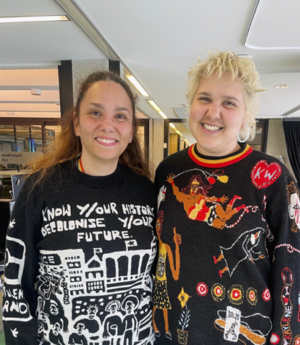
As part of the project, myself, along with Wikimedia's James Gaunt, organised and facilitated an editathon on June 22 at The Edge, SLQ's space for creativity and experimentation. The editathon focused on teaching First Nations participants how to create and improve Aboriginal and Torres Strait Islander content on Wikipedia. By the end of the session, attendees were equipped with the necessary skills to edit Wikipedia, add new references, and gain a deeper understanding of the platform. It was inspiring to witness a participant who initially held a sceptical view of Wikipedia transform their opinion, becoming excited about the wealth of information at their fingertips and the opportunity to contribute. These workshops are vital for promoting Indigenous sovereignty, encouraging Aboriginal and Torres Strait Islander people to share our stories and contribute new knowledge, and fostering a stronger connection to the library collections.
Blak Beat: Documenting the Journey on Instagram
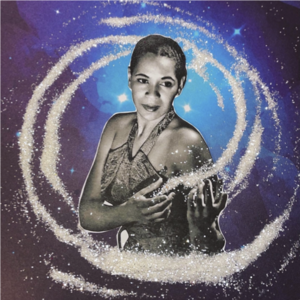
To document my journey as a Wikipedian and engage with the community (which is integral to us mob), I created the Instagram account @blak.beat, where I shared updates on the project and connected with a broader audience.
Gratitude and Acknowledgments
I am grateful for the productive and enjoyable time I have had during this project. I eagerly look forward to continuing to uncover, create, and share more content relating to our music. I extend my sincere thanks to all the staff at SLQ, especially Lenny Webber, Reuben Hillier, and Tania Schafer, for their unwavering support, nurturing environment, and guidance throughout my time onsite. I also express my gratitude to Wikimedia Australia, the Australia Council for the Arts, and the State Library of Queensland for their ongoing commitment and support of this important initiative. Together, we are amplifying Indigenous stories.
Please note: All images in this article are in copyright unless otherwise noted.

